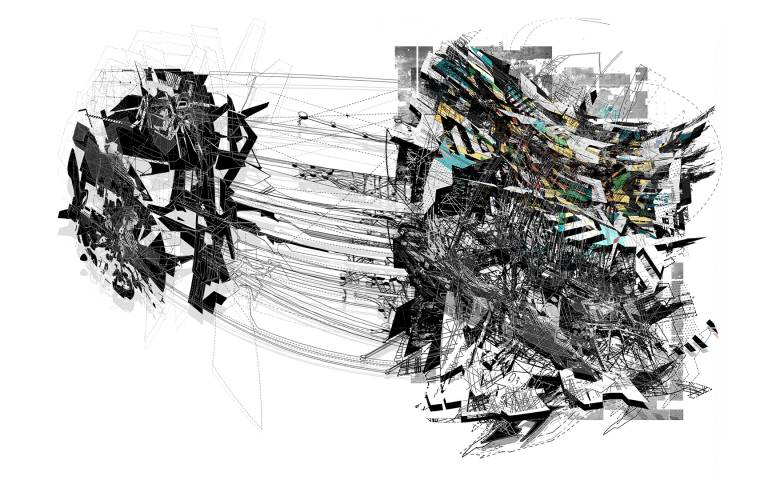 Research
Research

Subject
Speculative Assemblies – Drawing as a Kit-of-Parts
First and second supervisors
Abstract
The spatial agency of architecture has provided a potential framework for organizing knowledge. This thesis asks how architecture may be able to store and re-process information through the drawings it creates. Architectural drawings have a powerful influence on shaping our collective understanding of the world and our place in it. This thesis considers architecture as a visual construction. It proposes that a drawing should be conceived, assembled, and re-assembled as a kit-of-parts. My research aims to further possibilities of operational design strategies in architectural practice. This is studied through a series of visual constructs that I call machinic assemblies.
These machines are informed by several interconnected studies: one that re-examines the classic concept of the kit-of-parts developed by John Hejduk; other that revisits Kurt Schwitters’s Merzbau; with an incursion through Graham Harman’s object orientated ontology and assemblage theory, to test drawing, as an assembled architectural object. To understand the spatial possibilities of such assemblies there is extended research into projective geometry and the picture plane. A proposed frame that allows for the construction of another dimension, a place for decomposition, and re-assembly. Assemblage in this thesis, refers to a drawing process for de-composition, initiation, and consistency as procedures for its assembly as a kit-of-parts.
Could a drawing assembled as a multiplicity, itself be explored as a design tool and how could this affect the ways in which space is mapped, re-produced, and re-occupied? The argument is built on a weaved investigation of relevant projects, namely: Aby Warburg’s Mnemosyne Atlas (1929), Koolhaas and Madelon Vriesendorp’s The City of the Captive Globe (1974), John Hejduk’s the nine-square grid problem, and the production of my own design work.
The thesis is presented in three interdependent parts: text (Position[ing]), catalogue (dis-Position[ing]) and assemblies (Re-Position[ing]). These parts reflect and complement each other, permitting multiple cross-readings. Documenting the multiplicity, interpretation and (re)assembly, procedure through which the research is conducted.
Biography
Bea Martin is a British architect, writer, and artist. She is a Senior Lecturer in Architecture and the Inscriptive Practices and Future Processes Lead at the Manchester School of Architecture.
Prior to joining the MSA, Bea taught at University of Huddersfield, Birmingham City University and University of California at Berkeley.
As a practitioner, her technical and design experience in office spans over fifteen years, working for a variety of architectural practices in London, such as Richard Rogers and Partners. She is the founder of Speculative Assemblies, an experimental design lab exploring the visual construct in architecture. In her role as a visual theorist, the focus is on a conceptual investigation, digital and analogue, of the apparatus of drawing, the challenging boundary of drawing as a work of art, practice, and research that is both architectural and artistic but never an end in itself. Her work questions and reiterates the mission of drawing through continuous research, intense interrogation and devotion to craft.
Publications
- Martin, B. (2023) ‘Machinic Assemblies’, in Shaikh, H. (ed.) Drawing Attention: Architecture in the Age of Social Media, pp. 24-33
- Martin, B. (2020). Topo[graphies] of the Un/conscious. AIS - Architecture Image Studies, 1(2), 22 - 33.
Links
Image: Ad-herence in-Heritance, by Martin, B. 2021
 Close
Close

